Solution
Getting Started with ESET PROTECT: Step 2 of 6
← Prerequisites | Add client computers in ESET PROTECT →
Follow the instructions below to install ESET PROTECT on your network. For more information about what’s new in ESET PROTECT, see What is new in ESET PROTECT on-premises management console.
- Click Download ESET PROTECT Server to download the ESET PROTECT Server installer file.
- Run the installer.
- On the Welcome screen, select a language from the Language drop-down menu and click Next.
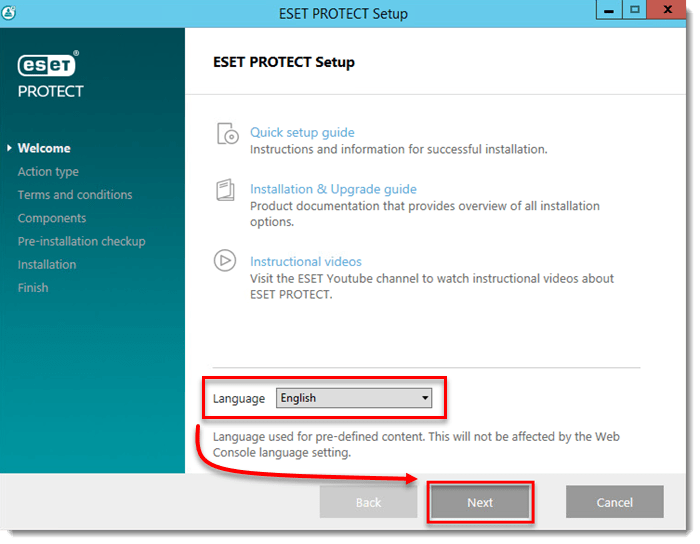
- Select Install and click Next.
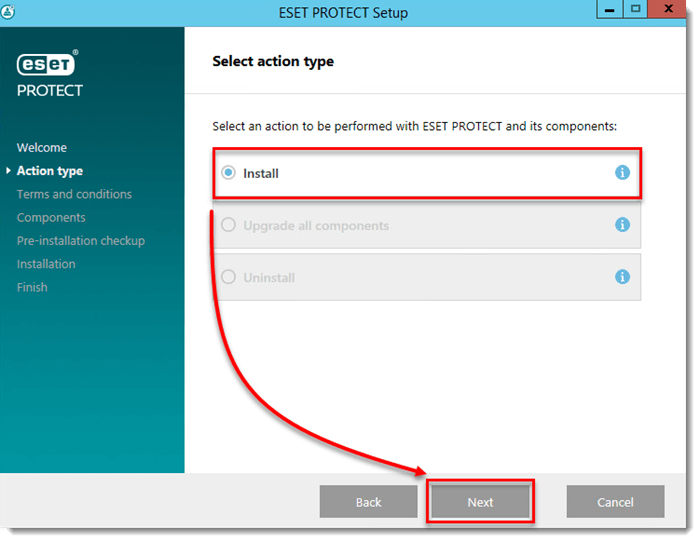
- Read the End-User License Agreement. If you agree, select I accept the terms in the license agreement. Deselect the check box next to Participate in product improvement program if you do not agree to send crash reports and telemetry data to ESET. If the check box is left selected, telemetry data and crash reports will be sent to ESET. Click Next.
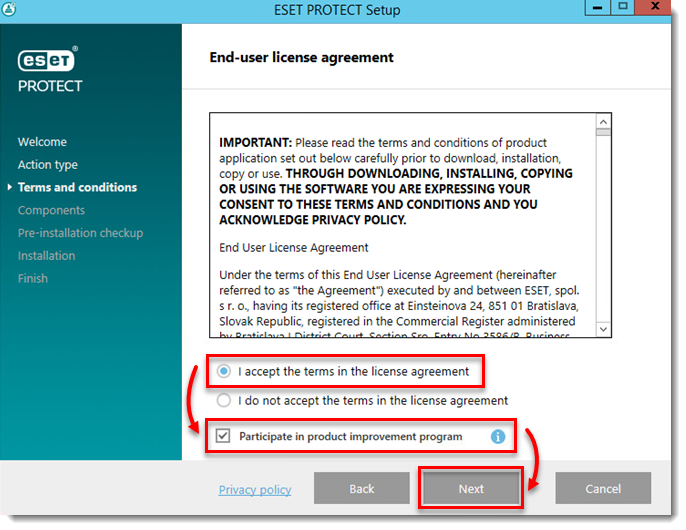
- Your network architecture will determine which components should be installed. Read the descriptions below and deselect the check box next to any components that you do not want to install. Click Install when you are done selecting components. Installation time will vary depending on your system configuration. If a prerequisite is not satisfied or an error occurs, follow the instructions from the installer to resolve any issues.
- Microsoft SQL Server Express: If you have an existing Microsoft SQL or MySQL database that you will use with ESET PROTECT, deselect this check box. Leave this check box selected to create a new Microsoft SQL Server Express database for use with ESET PROTECT.
- ESET PROTECT Webconsole: This will install the Apache Tomcat service necessary for ESET PROTECT Server to manage clients. We strongly recommend that you leave this check box selected. Select the check box Add custom HTTPS certificate for the Web console if you want to use a custom HTTPS certificate for the ESET PROTECT Web Console. If you do not select this option, a new keystore is automatically generated for Tomcat.
- Mobile Device Connector: This will install the ESET Mobile Device Connector (MDC) component, which enables the remote management of Android and iOS devices. See our Mobile Device Connector installation on Windows for more information.
- Rogue Detection Sensor: This will install ESET Rogue Detection Sensor, a component that helps locate unmanaged computers on your network so that you can deploy resources to allow for their management via ESET PROTECT. We strongly recommend that you leave this check box selected.
- Apache HTTP Proxy: We recommend that you deselect this component if you are unsure whether it is needed on your network. Apache HTTP Proxy can deliver significant performance improvements on networks of roughly 40 computers or more. Using HTTP Proxy will create and apply several proxy-based policies for clients and apply them automatically, which can affect your ability to download updates. You can install Apache HTTP Proxy later if you want.
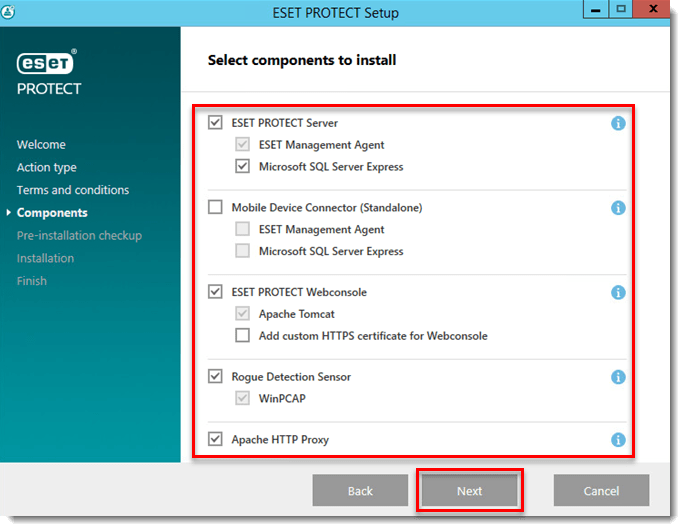
- Click Next in the ESET PROTECT Server Setup window.
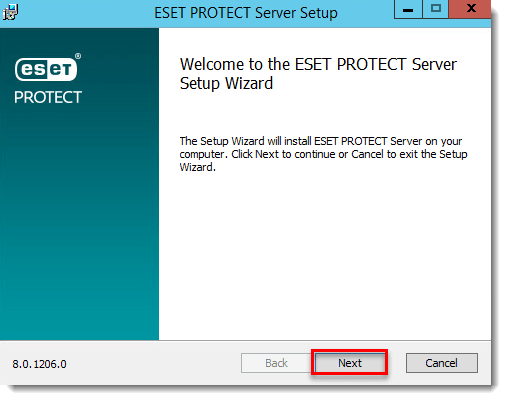
- If you chose to have Microsoft SQL Server Express installed in step 6, click Next to perform a database connection check and continue to step 9.
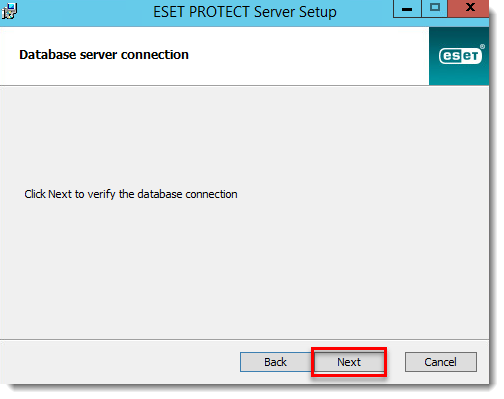
Users with a pre-existing database: Select the appropriate database type from the Database drop-down menu. Type the Database name, Hostname and Port (you can find this information in SQL Server Configuration Manager) for your database into the appropriate fields. If you are using MS SQL database, you can also select the Use Named Instance check box. This will allow you to use a custom database instance, including MS SQL database that is installed in a Failover Cluster (see more details in Online Help). Enter database administrator Username and Password. Then click Next. In the following screen, select Use existing user and then enter the Database username and Password if one is used.
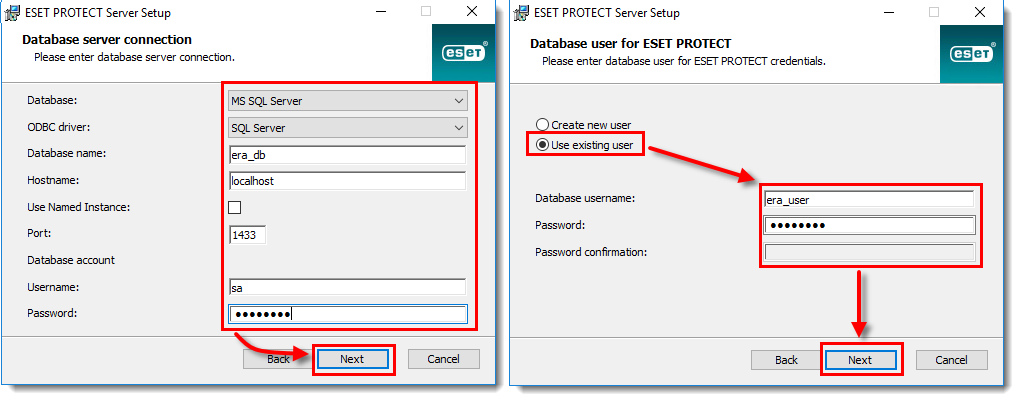
- Type the password you will use to log into ESET PROTECT Web Console into the Password and Confirm Password fields. Make sure to record this password for use later and then click Next.
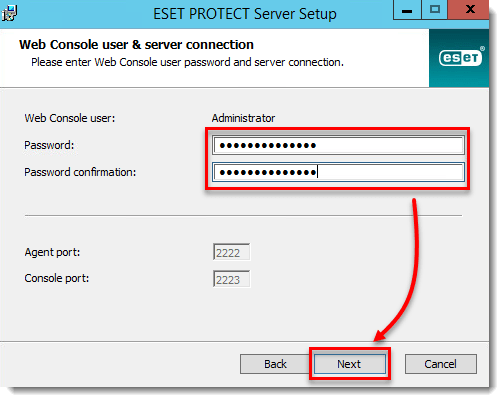
- In the Certificate information window, you can customize your Certification Authority. The only mandatory fields are Authority common name and Certificate validity. Enter any information about your Certification Authority that you want to add. If you create a password make sure that you record it because all client computers using this certificate will require that password to use the certificate. Click Next when you are finished.
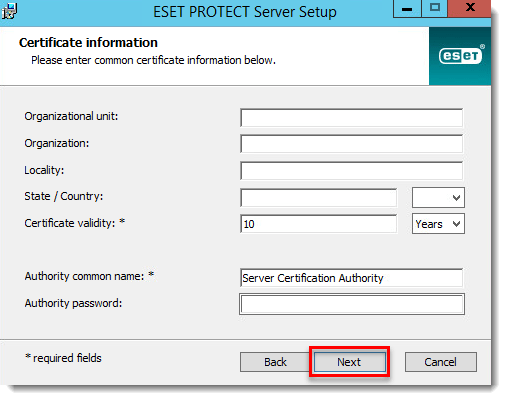
- Select Activate with License Key and type your License Key into the appropriate field, or select Activate later. If you have an ESET-issued Username and Password from an earlier version of ESET PROTECT (ESMC or ERA), you can convert them into a license key using ESET Business Account. Click Next when you are finished.

- Click Install.
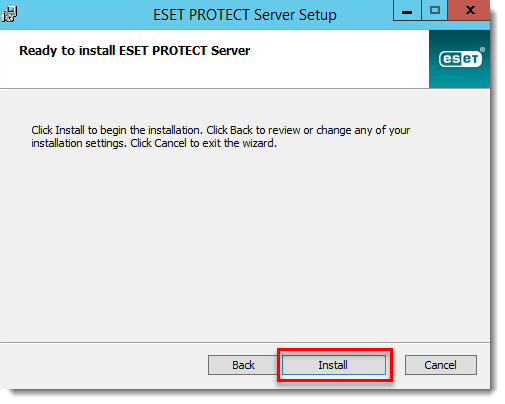
- Click Finish.
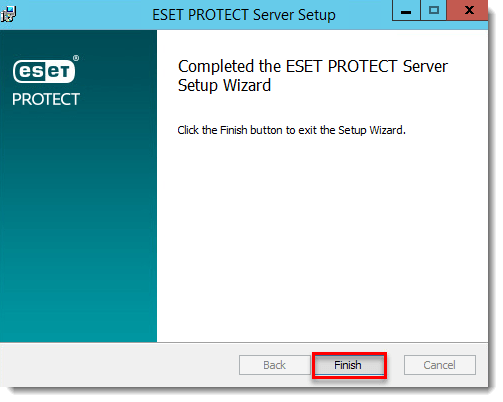
- If you selected to install the Rogue Detection Sensor, you will see the Installation Wizard for WinPcap driver. Make sure to select the check box Automatically start the WinPcap driver at boot time.
- In the Installation successful window, click the URL link to open ESET PROTECT Web Console. We recommend that you bookmark or make note of this URL for future reference. By default, the ESET PROTECT installer will create a link to Web Console in your Start menu.

- Open ESET PROTECT Web Console in your web browser, log in and save the ESET PROTECT Web Console to your browser’s favorites. How do I open the ESET PROTECT or ESET PROTECT Cloud Web Console? See also Getting started with ESET PROTECT Web Console.
If you are performing a new installation of ESET PROTECT, proceed to Step 3, Add client computers in ESET PROTECT.

